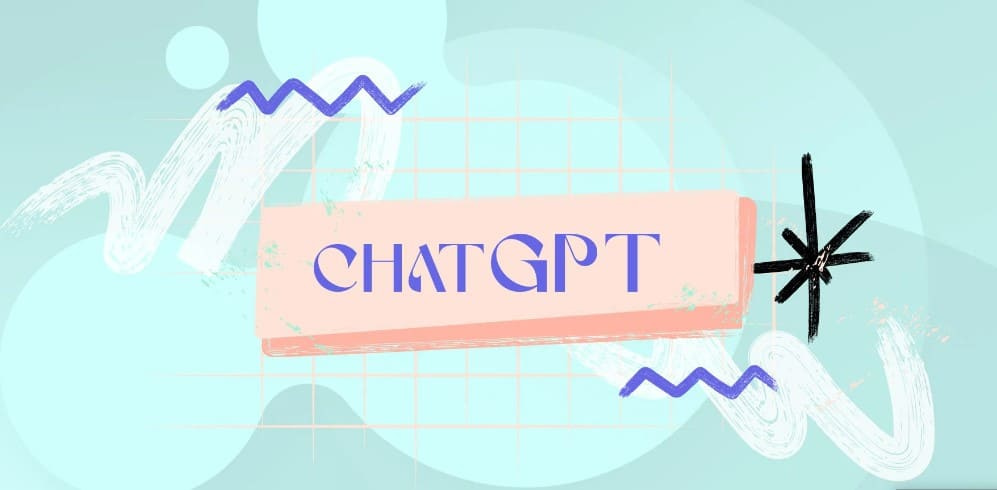
Understanding Data Protection in AI Chatting: Safeguarding Privacy and Security
Alan Turing proposed in the 1950s that computers and humans may have mutually beneficial interactions.
Eliza, created by MIT AI researcher Joseph Weizenbaum in 1966, was the first chatbot. It was based on Weizenbaum’s work in natural language processing (NLP).
AI chatbots use natural language processing (NLP) and AI to read, interpret, and automatically answer customers’ requests and general questions without the need for human interaction in the conversation.
New messaging apps have emerged throughout the years, and their use in both work and everyday life has only increased in popularity. Audio-input messaging programs like Amazon Alexa and Apple’s Siri have evolved beyond text-based chatbots to provide a more natural, conversational interface for refining replies and asking follow-up inquiries.
As opposed to responding based on basic rule-based question models, modern AI talking can discern what the user is attempting to accomplish using natural language comprehension, machine learning, and deep learning.
Deep learning and machine learning help AI chatbots improve their conversational accuracy over time. An AI chatbot’s replies get increasingly nuanced and accurate the longer it communicates with a particular person or organization.
ChatGPT (conversation Generative Pre-training Transformer), created by Sam Altman’s OpenAI and released in November 2022, is the most recent advancement in artificial intelligence conversation.
Over a million people have used it in only five days, chatting with the AI in a variety of accents, languages, and topics, contributing to its meteoric increase in popularity. Let us see how data protection in AI chatting happens.
Importance of data protection in AI chatting
These days, artificially intelligent chatbots use natural language processing and machine learning methods to glean insights from conversations across many platforms rather than relying on a rule-based paradigm.
One subset of artificial intelligence models, known as “traditional rule-based models,” relies on a set of rules rather than facts to guide its decision-making.
A chatbot’s ability to learn from a discussion that may include sensitive information increases the likelihood of a security breach; yet, a more realistic dialogue for the user is worth the risk.
Users are often in the dark about collecting, storing, and disseminating their personally identifying information.
If a company and its systems are infiltrated, personal data is lost, stolen, and used maliciously, then online dangers and weaknesses in AI chatting become serious security risks.
As a result, there is a need for some guidelines to protect the customer and concerns about data storage and usage gained from the communicating user using data protection in AI chatting.
Understanding data protection in AI Chatting
Since AI chat includes collecting, storing, and using personally identifiable information, data privacy is a vital concern. For more information on how to keep your chats with AI safe, see this.
- Information Security: When users engage with AI chatbots, the bots may get sensitive information such as names and email addresses. The General Data Protection Regulation (GDPR) of the European Union mandates strict compliance with data protection rules. This involves establishing trust with users, protecting their information, and being open and honest about how they utilize it.
- It is crucial to employ stringent security measures to protect user data from breaches and illegal access as AI chatbots analyze and store user data. This includes safe data storage methods, frequent security assessments, and the encrypting of data at rest and in transit. To guarantee that only authorized individuals have access to the data, proper access controls and authentication measures must be put in place.
- Personal information that has to be protected from prying eyes can be anonymized or pseudonymized. Pseudonymization entails substituting made-up identifiers for the original ones, whereas anonymization involves erasing all traces of individually identifiable information. These methods reduce privacy issues by lessening the likelihood that people may be re-identified in the data.
- AI chatbots should be transparent with their users about the data they are collecting, what they will use it for, and who has access to it. Users must be given the opportunity to make educated decisions about the acquisition of personal data and be made aware of their rights in this area. Users need easy access to clear privacy and terms of service rules.
- Minimizing and retaining only the minimum amount of data required to accomplish their goals is essential in protecting users’ privacy while interacting with chatbots powered by data protection in AI chatting. Avoid collecting information that isn’t essential, and set and adhere to strict data preservation policies. It is important to comply with data protection requirements, thus routine data deletion or anonymization mechanisms should be put in place.
- Data Protection Agreements should be in place whenever data is shared with third-party service providers for hosting or processing to guarantee that the data is handled securely and in line with applicable rules. The selection of reliable partners and the continual monitoring of their data protection standards are also crucial considerations.
- Accountability and User Rights: AI chatbot systems should provide users control over their data, including the opportunity to view, edit, or delete any information provided by the user at any time. Having systems in place to deal with user demands relating to data privacy and offer suitable accountability measures is crucial.
- Compliance with data privacy regulations, strong security measures, user permission, and openness in data handling methods are all essential for protecting user data in AI chat. Businesses can earn customers’ trust and show they care about protecting personal data when they prioritize data security.
Types of data collected and processed by AI chatting
A productive discussion with an AI talking tool requires data, but what data does the chatbot collect and how is it used? Companies may improve their service to clients by learning more about them.
As a result, AI chatbots gather a wide variety of sensitive information, such as complete names, locations, account details, emails, phone numbers, preferences, and service reviews.
Multiple goals motivate the gathering and analysis of this information, including providing a better user experience and serving more relevant advertisements.
The information gathered is also utilized to train the AI chatbot’s language comprehension and question-answering capabilities for when it is needed in the future.
Better business outcomes can be achieved with the aid of AI chat support, but only if the data used to train the service is collected effectively.
Potential risks and privacy concerns related to data protection in AI chatting
Because it requires access to the internet to function, data protection in AI chatting opens users up to the risk of having their private information stolen in a cyberattack.
To steal sensitive information from consumers, including banking details, malicious chatbots can be found mimicking human dialogue and behavior.
AI chat is vulnerable to identity-based crimes since it is programmed to learn about its users and their preferences. In order to pass as someone else, identity thieves need to learn as much as possible about their target.
Tools and procedures to limit data access are integral to data protection. Companies need to follow the rules so that consumers’ demands for privacy are honored and their private data is secure from intrusion.
Users can take further steps to safeguard themselves beyond just backing up their data, such as equipping their devices with anti-virus software, putting up a firewall, and employing lengthy, difficult passwords. Knowledge of current best practices for internet security is essential.
The collecting of extensive personal data for the chatbot’s efficiency conflicts with the concept of data minimization and purpose limitation enshrined in the European General Data Protection Regulation (GDPR).
Compliance with GDPR by ChatGPT
OpenAI’s data protection in AI chatting privacy policy explains the company’s dedication to upholding the requirements of the California Consumer Privacy Act with regard to ChatGPT.
However, information on international regulations like GDPR could be more relevant. The data privacy policy explains how your data will be used, how long it will be kept, and who may access it.
There are additional avenues for users to reach out to specialized teams with questions or concerns about handling their personal information. OpenAI’s data privacy policy for ChatGPT may not fully comply with GDPR in some respects.
The importance of GDPR’s stressed components of data privacy, which must be adhered to by companies that gather user data, have been underlined in the preceding sections.
These repercussions are important for businesses to think about if they want to use these technologies to analyze consumer data and develop insights via ChatGPT.
ChatGPT may have difficulties in the aforementioned areas while processing, storing, and sharing users’ personal data in accordance with GDPR regulations.
Data minimization
Using a technique called reinforcement learning from human input, in which the model is taught through interactions and reinforcement from humans, the ChatGPT model was developed.
The supervised training, however, would not have been possible without the AI being given data from the entire internet. In supervised training, the model is taught to map inputs to desired outputs by being trained on labeled data.
Under the General Data Protection Regulation, solutions that collect, store, or utilize individuals’ personal data must do so with just the bare minimum of data, which must be obtained in a fair and transparent manner. Several billion online data points were needed to train and develop ChatGPT’s AI engine.
Any such data collection for the purpose of AI engine training violates GDPR. Data sources have yet to be made clear in the OpenAI blogs, especially in cases where user data was utilized to train the AI. However, the OpenAI blog describes the training of ChatGPT in great detail.
The process of training ChatGPT
Purpose limitation
Purpose limitation is a fundamental principle under GDPR that requires any solution that processes personal data to do so only for the defined, clear, and legal reasons.
ChatGPT, on the other hand, is being utilized for machine learning, which means that the data it processes is only improving its accuracy.
Therefore, businesses that wish to benefit from ChatGPT’s intelligence while also processing users’ personal data must make it abundantly obvious to those users that their data will be used to train ChatGPT.
Explainability
The GDPR also stresses the importance of programs that use AI to make judgments to be transparent about the reasoning behind their choices.
In order to be in compliance with GDPR, businesses that use the ChatGPT AI engine will need to include skills explaining the insights it generates.
Segregation of data
GDPR mandates the implementation of technological and organizational safeguards to prevent the mixing of disparate data sets.
When information is exchanged with other parties, this is of paramount importance.
ChatGPT may compile data from several sources to draw conclusions and insights.
ChatGPT’s suggestions, which may incorporate information gleaned from other customers’ data qualities, may violate GDPR if a company wishes to make a decision based on the customer’s data.
The disclosure of this information to unaffiliated third parties may also violate GDPR.
Third-party data sharing
Under the General Data Protection Regulation (GDPR), users are required to be notified whenever their data is shared with a third party and to be given a clear explanation of how it will be used.
For such data-sharing techniques to be legal, users’ informed, freely supplied consent is required. However, the following is stated in OpenAI’s data policy.
Without additional notification to you, we may share your personal information with other parties as permitted by law.
There is a lack of information about the specific measures that will be taken to ensure that data sharing with third parties comply with GDPR standards.
However, there are specifics about the categories of other organizations with which OpenAI may share user information. Here are some of them:
- Companies that supply goods and services to OpenAI fall under the category of “vendors and service providers.”
- When OpenAI sells or buys a company or is otherwise involved in a strategic transaction, the acquiring or new company will require access to certain user information.
- for required by law, such as for protecting national security or responding to an emergency, OpenAI may be forced to disclose information about its users.
- Organizations that share common ownership with OpenAI are considered affiliates and are required to adhere to the OpenAI data privacy policy.
Conclusion
Data protection in AI chatting is important to guarantee their confidentiality. Data anonymization, encryption, informed permission, and openness are all techniques that may be taken to reduce privacy threats.
In order to gain users’ confidence and stay in accordance with data protection laws, it is necessary to gather as little data as possible and set up accountability measures.
In order to gain customers’ trust and prevent their personal information from falling into the wrong hands, firms should prioritize data security while developing artificial intelligence chatbots.
Related Posts

Top-Rated Best Mobile Chargers In India For 2023admin . February 28, 2023

Best Sony Headphones And Earbuds in 2023admin . March 9, 2023

The Best Home Printers for Your Needs in the USAadmin . June 7, 2023

Best Free Sports Streaming Apps in 2023admin . March 7, 2023

The 10 Best Gaming Monitors In 2023admin . March 22, 2023

Best Computer Desk for Homes in the Marketadmin . May 24, 2022

What is ChatGPT? Best ChatGPT Alternatives for Your Businessadmin . May 10, 2023

Best Wireless Printers for Home Use in the USAadmin . June 7, 2023

Choosing the Best Color Printer for Home Use 2024admin . December 6, 2023
Latest Posts

Exploring the Best Cash Advance Apps of 2024 April 8, 2024

Top 34 Passive Income Ideas in 2024 March 19, 2024

Top 10 Penny Stocks to Buy Canada 2024 February 23, 2024

Best Canadian Artificial intelligence stocks under $1 2024 February 23, 2024

Top Artificial Intelligence Stocks Canada 2024 February 20, 2024

